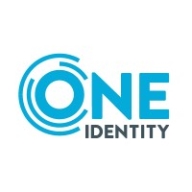

OneLogin by One Identity and Ping Identity Platform compete in the identity and access management sector. Ping Identity appears to have the upper hand due to its extensive customization capabilities and robust features suitable for managing complex identity landscapes.
Features: OneLogin is known for its ease of integration, single sign-on capabilities, and self-service password resets, making it appealing for centralized management. Ping Identity Platform provides extensive customization options, robust multi-factor authentication, and is particularly adept in handling legacy systems and detailed authorization policies, offering diverse solutions for enterprise environments.
Room for Improvement: OneLogin could enhance its 24/7 support, improve performance, and offer more advanced two-factor authentication. There is also a need to improve offboarding processes. Ping Identity Platform would benefit from a simplified user interface and better support for passwordless authentication. Additionally, enhancing its community support and documentation could strengthen troubleshooting foundations.
Ease of Deployment and Customer Service: OneLogin is praised for its simple deployment in cloud environments, and its customer service is efficient despite some support issues due to company acquisitions. Ping Identity Platform manages a variety of deployment needs with on-premises, hybrid, and public cloud options. Users commend its excellent customer service and reliable technical support, although initial setup complexity may require expertise.
Pricing and ROI: OneLogin is considered affordable, providing strong ROI through time savings, yet some concerns exist about possible price increases after contracts. Ping Identity Platform offers competitive pricing and excellent ROI, appealing to large enterprises with its scalable security features, although its cost might be a concern for smaller businesses without negotiation.
| Product | Market Share (%) |
|---|---|
| Ping Identity Platform | 6.4% |
| OneLogin by One Identity | 2.8% |
| Other | 90.8% |


| Company Size | Count |
|---|---|
| Small Business | 7 |
| Midsize Enterprise | 4 |
| Large Enterprise | 8 |
| Company Size | Count |
|---|---|
| Small Business | 8 |
| Midsize Enterprise | 2 |
| Large Enterprise | 20 |
OneLogin by One Identity is a cloud-based access management solution for the modern enterprise. It delivers secure access for every user, every app and every device to meet an organization’s Workforce and Customer and Identity and Access Management (CIAM) needs.
OneLogin provides secure single sign-on, multi-factor authentication (supporting a wide array of passwordless authentication factors), adaptive authentication, desktop-level MFA, directory integration with AD, LDAP, G Suite and other external directories, identity lifecycle management and much more. OneLogin advanced authentication capabilities provide multi-layer, context aware and risk-based protection, minimizing the most common attacks and resulting in increased security, a frictionless user experience, and compliance with regulatory requirements. Furthermore, OneLogin’s user-friendly interface and streamlined design make it easy for end users and IT administrators to navigate the platform and remain productive.
We monitor all Single Sign-On (SSO) reviews to prevent fraudulent reviews and keep review quality high. We do not post reviews by company employees or direct competitors. We validate each review for authenticity via cross-reference with LinkedIn, and personal follow-up with the reviewer when necessary.